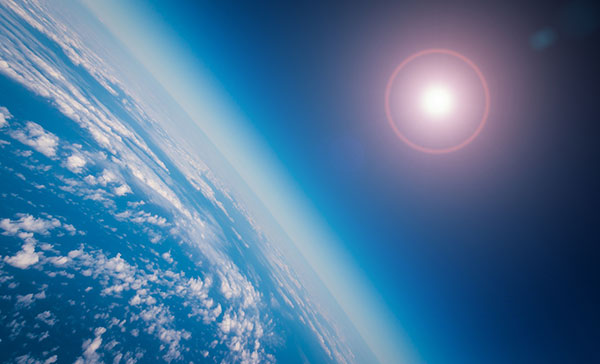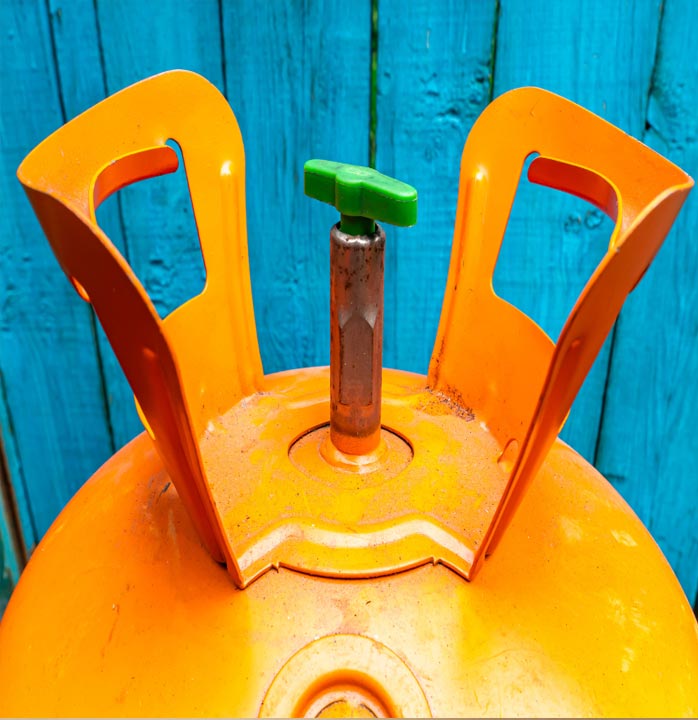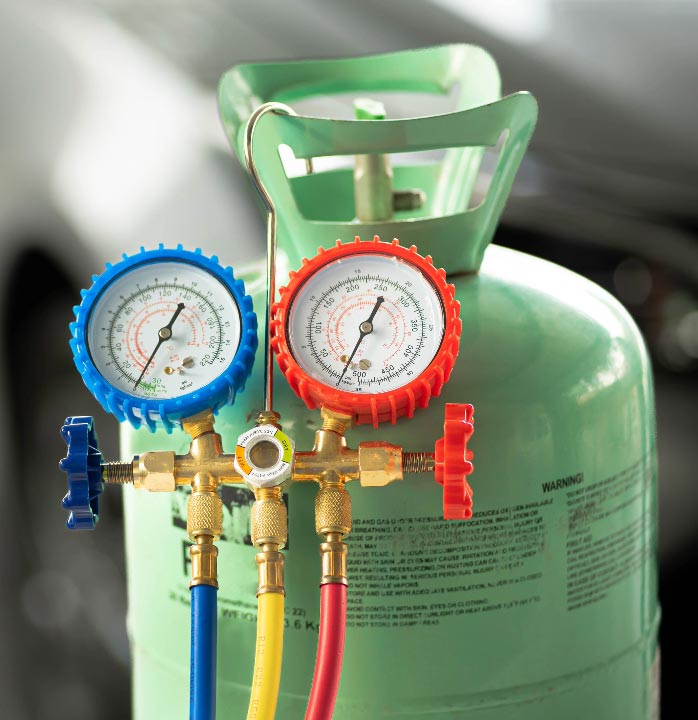Ozone is very rare in our atmosphere, averaging about three molecules of ozone for every 10 million air molecules. In spite of this small amount, ozone plays a vital role in the atmosphere.
Ozone is mainly found in two regions of the Earth’s atmosphere. Most ozone (about 90%) resides in a layer that begins between 6 and 10 miles (10 and 17 kilometers) above the Earth’s surface and extends up to about 30 miles (50 kilometers). This region of the atmosphere is called the stratosphere. The ozone in this region is commonly known as the ozone layer.
Stratospheric ozone (sometimes referred to as “good ozone”) plays a beneficial role by absorbing most of the biologically damaging ultraviolet sunlight (called UV-B), allowing only a small amount to reach the Earth’s surface. The absorption of ultraviolet radiation by ozone creates a source of heat, which actually forms the stratosphere itself (a region in which the temperature rises as one goes to higher altitudes). Ozone thus plays a key role in the temperature structure of the Earth’s atmosphere. Without the filtering action of the ozone layer, more of the Sun’s UV-B radiation would penetrate the atmosphere and would reach the Earth’s surface. Many experimental studies of plants and animals and clinical studies of humans have shown the harmful effects of excessive exposure to UV-B radiation.
Chlorofluorocarbons, or CFCs, are a class of gases once widely used as refrigerants and propellants. Although they are both nontoxic and very useful, CFCs damage the ozone layer.
CFCs are fairly nonreactive. This feature makes them both attractive as industrial chemicals and dangerous to the environment. Because they are so nonreactive, they break down very slowly when released into the atmosphere, giving them time to reach the stratosphere, and the ozone layer.
When they are exposed to strong ultraviolet light, CFCs finally break down to release lone chlorine atoms with an unpaired electron. These chlorine atoms are highly unstable and react with ozone to break it down into oxygen through a type of chain reaction. A single chlorine atom can react with as many as 100,000 molecules of ozone before it finally combines with another atom to form a stable compound. That’s why even small numbers of CFC molecules can destroy large quantities of ozone and remain active in the upper atmosphere for long periods of time.
CFCs don’t remain active indefinitely, of course; over time, chemical reactions convert the chlorine atoms into other more stable compounds that don’t break down ozone. That’s why CFC levels in the stratosphere will gradually fall as long as humans cease to add these gases to the atmosphere. Given enough time with no CFCs present, the ozone layer can eventually recover from the damage, because ozone is formed in the upper atmosphere through natural chemical processes. Production of CFCs was phased out by the mid-1990s through an international agreement called the Montreal Protocol.
One thing that is being done is refrigerant reclamation. What this entails is the the evacuation of refrigerants from HVAC/R equipment—once reclaimed, the refrigerant can be recycled (cleaned for reuse) or reprocessed to meet purity specifications. This is done with CFCs to bring them out of circulation and provide new alternatives.
Our highly-trained technicians are constantly updated on new regulations, training, and protocols for dealing with refrigerants you’ll find in almost any commercial refrigeration or HVAC unit. If you need a professional refrigerant company to deal with your refrigerants, give us a call at 844-PURECFC (787-3232) and we’d be more than happy to tell you how we can help. You can also use our online contact form if you don’t have time for a lengthy phone call.
Refrigerant Services LLC are fully certified to handle and recycle your old refrigerants so you can be sure that you’re getting the best quality service and safety for your employees.





